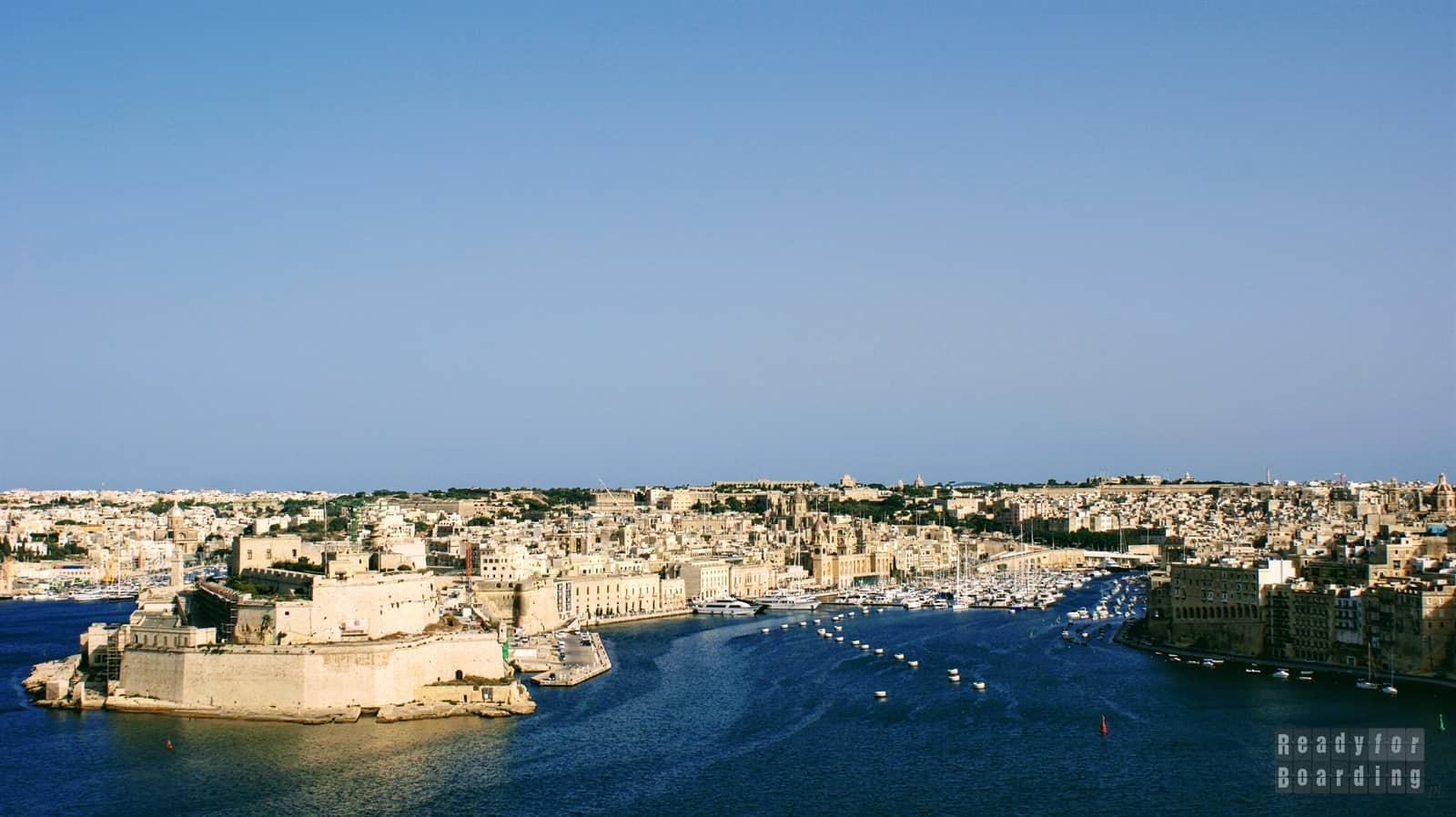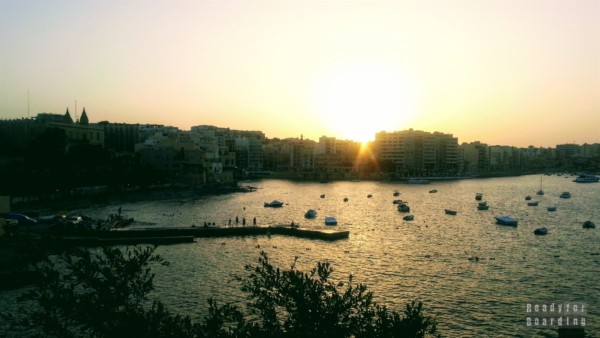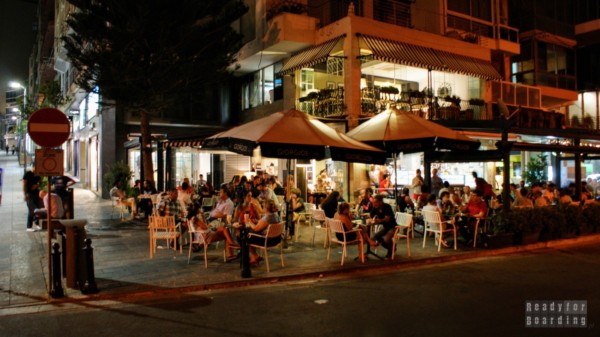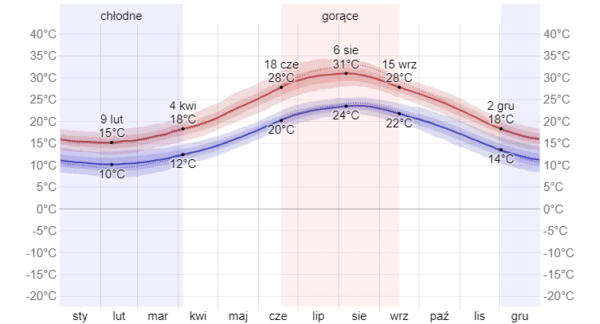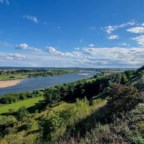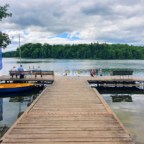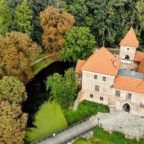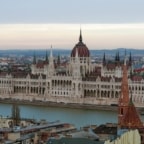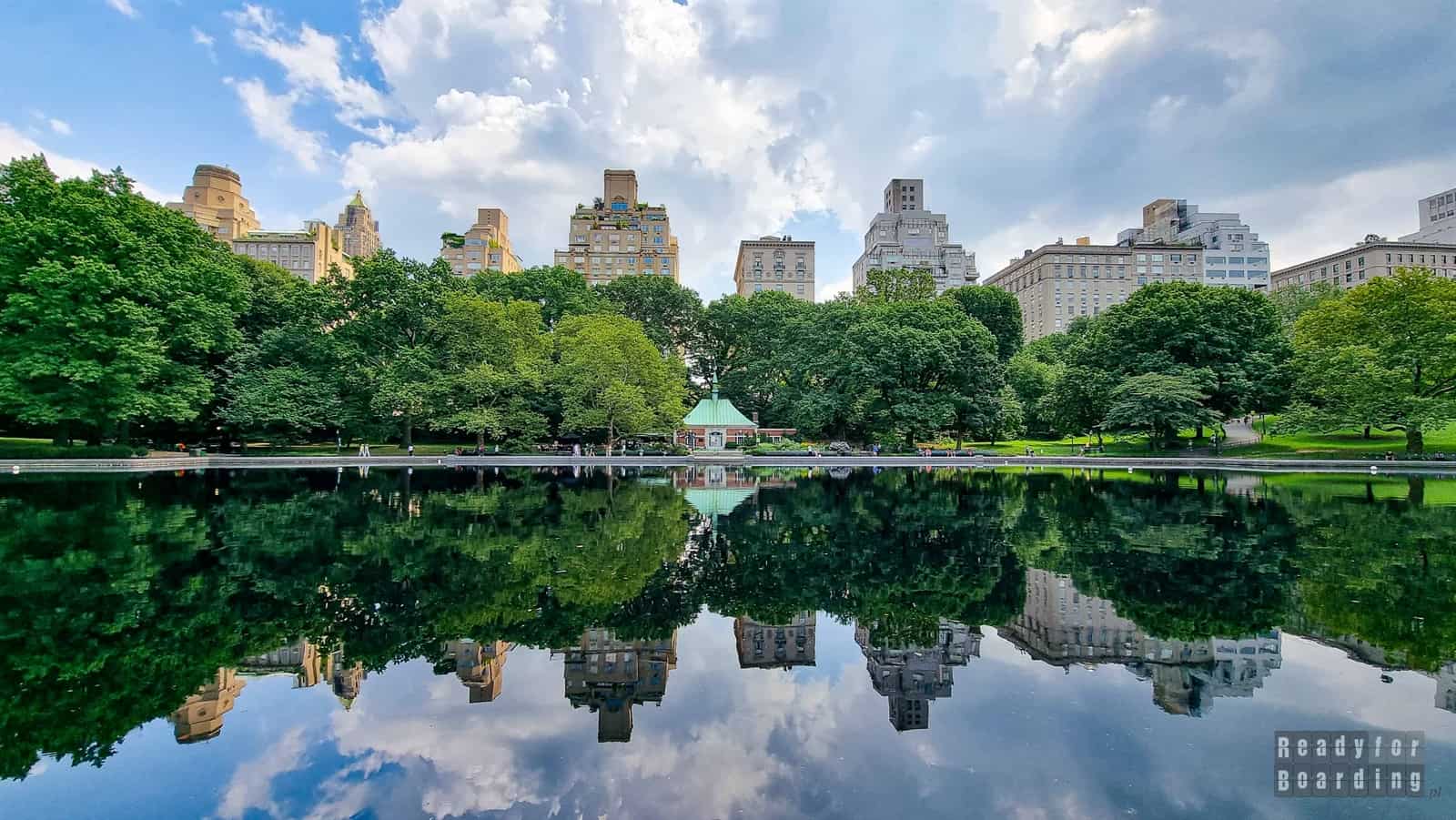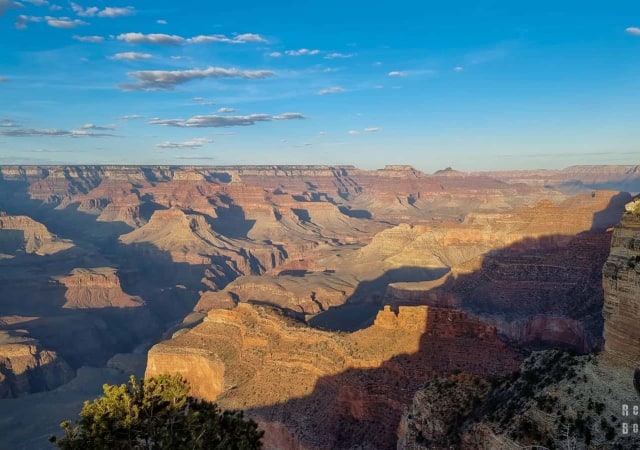Valletta is a city that beats other capitals in the number of monuments per square meter! In the less than one square kilometer that Malta’s capital occupies, there are as many as 300 monuments, which is the most common information given by guidebooks and other blogs. Today we invite you on a journey through the current capital of this island nation, we will show you the highlights of Valletta.
[Aktualizacja] It’s been a while since our trip to Malta, so it’s high time for an update. We have verified all the information we wrote about earlier, expanded the descriptions and enriched the post with practical advice to make it even more useful.
Malta is a country in the Mediterranean Sea, south of Sicily, which is a popular vacation destination for many Poles. Before leaving, someone told us that Malta “is only two streets crosswise.” However, we cannot agree with this (we confirm – there are some more roads ;) ). Compared to Mallorca and Ibiza as a party destination, it also became our destination – and it wasn’t the party nature of the island that prompted us to visit Malta.
Malta is not just one island, but an archipelago consisting of the main island of Malta and Gozo, Comino and several smaller islets. Malta’s history is very long and turbulent, as the islands were located on the main sea routes in the Mediterranean and many rulers of past times wanted to have their “base of departure” here (Phoenicians, Romans, Arabs, Carthaginians, British, etc.). The influence of many cultures can be seen at every turn, and the number of monuments found on the islands is also astonishing (320 monuments are in the capital alone!).
Currently, Malta is such a Little Britain – it is from the UK that most tourists are here, they drive on the left, and English is the official language here (along with Maltese).
We spent a week in Malta. It was a moderately intense week. There was some sightseeing, but there was also time for beachcombing. In this post, however, we would like to focus on Malta’s capital, one of the first choices when it comes to attractions other than relaxing on the beach.
Table of contents
Valletta – the capital of Malta
Valletta is the current capital of Malta and although it occupies less than a square kilometer there are as many as 320 monuments and the entire city is a UNESCO World Heritage Site. Yes, Valetta is tiny, which may surprise some, because looking at a map of Malta, one would think that the entire northeastern part is the capital of the island, however, administratively Valetta is only a part of this “agglomeration”.
And yes, right next door we have towns such as Sliema, Gżira and the most partying St Julian’s. In fact, walking along the waterfront, we don’t even know when we will suddenly find ourselves in another locality. Why are we writing about it? Because in Malta, it is not necessary to look for accommodation in the capital itself, in fact, we advise against it.
In the above-mentioned towns there are a multitude of hotels where you can spend the night, and thanks to the local public transport you will easily get both to Valetta and to the end of the island (although perhaps “easily” is a bit of an overstatement…. but about that another time). Nevertheless, an overnight stay in this area is recommended if you are mainly focused on sightseeing rather than beachcombing (unless you don’t mind rocky beaches, but there are several more interesting places to relax by the sea shore in Malta).
There are also numerous bars and restaurants in the city/district of Sliema, Gżira and St. Julian’s, and life here goes on 24 hours a day (these places even come alive after dark).
As for getting to Valletta itself, there is a bus station right at the gates of the city (Valletta City Gate) and if you are traveling by public transport around the island, this is where you will start your tour of Valletta from. It is worth remembering this place and discerning bus departures, as it is the main transfer point on the island. We, staying overnight in Sliema, often took a bus to the station to transfer here to another bus going to other corners of Malta.
Valletta itself is not a big city, quietly walkable, but nevertheless it is worth adding that many hills here and constant walking up and down can tire you out, and especially if you plan to come during the holiday season when it is really hot. Nevertheless, it is worth discovering this city unhurriedly, on foot (remember that car traffic here is only available to residents).
Valletta – attractions of Malta’s capital city
What particularly stuck out to us? What image of Valletta do we have before our eyes when we think back to Malta? First of all, the view from Sliema over the capital is dominated by the walls of Fort St Elmo and the dome of the Basilica of Our Lady of Mount Carmel (Carmelite Church).
However, you have to walk almost the entire city before you can reach them.
As we mentioned above, you can start your tour from where the city buses arrive. The place is very distinctive, in addition to many buses there is the Triton fountain, a tourist information center and the Gate to the city (Valletta City Gate).
Passing through this gate you enter a place where it is hard to take your eyes off the numerous monuments, although gate is a bit of a stretch – it is now simply the entrance to the city. Once you cross it, this city, inconspicuous on the map, will charm you with its buildings, architecture, history,…
Royal Theatre Square
Walking deeper into the city, after walking a short distance, the Royal Theater Square (Pjazza Teatru Rjal) appears on the right – this is an open-air theater that opened in 2013 on the site of the former Royal Opera House building using the ruins that remained after the 1942 bombing.
Today it is a venue for various events and concerts but as recently as 2006 the Opera House building was to be converted to house Parliament. This idea, however, did not meet with much support, and it was eventually decided that Parliament should be located in a brand new building right next to the theater (the City Gate was also rebuilt as part of the project).
Despite the fact that it is a new building in Valletta, the mass completely stands out from the historic buildings, it was designed so that the color scheme blends in with the surroundings. Nevertheless, in our opinion, such historic sites should be more about adapting existing buildings than erecting modern buildings on historic squares (by the way, the construction of the new Parliament headquarters cost about 90 million euros!).
St. Peter’s Cathedral. St. St. John the Baptist
Walking through the streets of Valletta your attention will surely be attracted by the large number of churches – in less than a square kilometer there are as many as 28 (it is also interesting that in Malta and Gozo there are as many as 359 churches!)[source]. The most impressive is concathedral of St. St. St. John the Baptist and we strongly encourage you to go inside, as it hides amazing interiors. The detailed decorations, the paintings, the splendor, the floor with tombstones of nearly 400 monastic knights and grand masters of the order – this is definitely one of the most beautiful temples we have seen! There is an entrance fee, but it’s definitely worth it!
Tickets: adult – 15 euros, reduced ticket – 12 euros, children under 12 enter for free.
Upper and Lower Gardens of Barrakka
The small capital city has found room for oases of greenery: the Upper and Lower Barracca Gardens are two separate gardens that offer some shade and views of the bay and the towns across the bay. Both of these places are ideal for relaxation: there are benches, fountains, and you can enjoy a cup of coffee. The Upper Garden is particularly noteworthy, because below it is a terrace with cannons, from which shots are fired (twice a day).
The gardens are visited for free.
National Archaeological Museum
Among the museums we should certainly mention the pride of Malta – the National Archaeological Museum, where on several floors you can see various exhibits presented by the periods from which they come, and the most famous of them is a sculpture: the Maltese Venus.
Tickets: adult – €5, reduced ticket – €3.5, children under 6 enter for free.
Palace of the Grand Master
Malta was ruled by the Order of St. John for more than two centuries, and Valletta is named after one of the order’s masters, Jean Parisot de la Valette. The city’s history is strongly linked to the order and there are several places where you can see the remains of the order and its history.
One of them is the Palace of the Grand Master, an imposing building where the president is currently in office (until 2015 it was the seat of Parliament). The palace was open to visitors, who could look at the courtyard, chambers, see the armory, but now it is temporarily closed (we recommend taking a virtual tour on Google Street View instead ;) )
Fort St. Elma
It’s also worth going to Fort St. Elma – It is located at the tip of the Sciberras peninsula and was built in 1552 by the Order. It played a key role when it repulsed an attack by the Ottoman Turks for as many as 28 days (it was eventually captured but the time gained allowed other points to be better prepared and reinforcements from Spain arrived in time, and the Turks were defeated).
The building houses the National War Museum (entrance is charged: adult – 10 EUR, reduced tickets – 5,50 – 7,50 EUR, children under 5 years enter for free).
Malta Experience
We also recommend going to the Malta Experience – this is a multimedia show highlighting the turbulent history of the archipelago. It is best to look here at the beginning of a tour of Malta, as it gives an interesting perspective on further discovery of the island (normal ticket – 16 EUR, reduced tickets – 6 – 11,5 EUR, children under 4 years enter for free).
What else is worth seeing in Valletta?
For example, the Siege Bell War Memorial commemorating the defense of Malta and the deaths of some 7,000 people during World War II, the war quarters (Lascaris War Rooms), the Church of Our Lady of Victory, the Pro-Cathedral of St. Peter and St. Paul. The Church of St. Paul and the Church of the Carmelites.
Of course, don’t limit yourself to just this list. It’s worth exploring Valletta in your own way – peeking into the various streets, admiring the characteristic galarias, or balconies, looking at the many sculptures….
Valletta – map of attractions
Below you will find a map with all the attractions of Valletta marked. Which we described for you in this post:
Mdina or Valletta?
If you’re interested in historic, historic Malta, you should also see Mdina, the former capital of Malta. Both cities are historic, although different, and in our opinion, rather than wondering which one to visit, it’s just best to make time for both.
On one side is bustling La Valletta, and on the other is quiet and peaceful Mdina. Being in high season, it was louder and bustling in Valletta, with lots of tourists winding through the streets. In Mdina, it was definitely looser and less crowded at the same time.
Personally, however, if we had to choose just one, our choice falls on Mdina – a unique city that is memorable.
Practical information
Weather in Valletta
Valletta, like the rest of Malta, is very hot in the summer, with temperatures reaching 30°C during the summer months (so from mid-June to mid-September). August is the warmest, when average temperatures are between 23°C and 32°C. Precipitation during this (holiday) period is also the lowest of the year.
The coldest time in Malta is from December to March – that’s when average temperatures in Valletta are below 18°C (the coldest month is February). The most precipitation is in December.
Data based on:
Weatherspark.com
Where to stay overnight in Malta? Accommodation in Valletta?
Where to stay overnight in Valletta? Recommended beyond ;)
As we mentioned at the beginning of the post, there are several smaller towns around that are equally well-connected to the rest of the island, and cheaper and less besieged by visitors. Unfortunately, in high season, accommodations are quite expensive (even those of a lower standard) and hard to come by. So if you have the opportunity, we recommend booking in advance.
Here are a few suggestions (we are also adding some facilities from Valletta for comparison):
- Grand Hotel Excelsior
Address: Great Siege Road, FRN 1810 Valletta
Prices: from 681 PLN for a double room
Link:
https://r4b.link/booking-excelsior
- Osborne Hotel
Address: 50 South Street, VLT1101 Valletta
Prices: from 756 PLN for a double room
Link:
https://r4b.link/booking-osborne
- Valletta Lucente Guest House
Address: 20 St. St. Lucia’s Street, VLT 1186 Valletta
Prices: from PLN 718 for a double room (breakfast included).
Link:
https://r4b.link/booking-lucente
- America House
Address: 27 Amery Street, SLM 1704 Sliema
Prices: from 427 PLN for a double room (breakfast included).
Link:
https://r4b.link/booking-amery
- Pebbles Boutique Aparthotel
Address: 88-89 The Strand, SLM 1022 Sliema
Prices: from 250 PLN for a double room
Link:
https://r4b.link/booking-pebbles
- Chapter 5 Hotel
Address: Mgr. Dandria 58-56 Chapter 5, XBX 1531 Taʼ Xbiex
Prices: from 240 PLN for a double room
Link:
https://r4b.link/booking-chapter
- J’Me Boutique Hotel (adults only!)
Address: 43, Birkirkara road, STJ 1304 St. Julian’s
Prices: from 404 PLN for a double room (breakfast included)
Link:
https://r4b.link/booking-jme
Getting to Valletta
No matter where you spend the night on the island, getting to the capital should not cause you any problems. As we mentioned at the beginning, almost under the Gate to the City there is a public transport transfer stop – Valletta Bus Terminal (moving around the island by bus is the cheapest option).
The bus schedule is available here.
Valletta can also be reached by ferry, which runs every half hour from Sliema.
You cannot enter Malta’s capital by car, so if you are traveling in a rented car you should park it in one of the large parking lots outside Valletta.
Our opinion about Valletta
Valletta is, in our opinion, a city you must visit while in Malta. By far the most impressive was the St. Peter’s Concathedral. St. The site’s interior is a part of the St. John the Baptist Church and, above all, its interior. We recommend that you start by taking a look at the Malta Experience to learn about the history of the archipelago and to explore, with a more informed_ness, the different parts of not only Valletta, but the entire island.
Be sure to read also: Malta – some useful information.
Finally, we recommend you to view our gallery of images:

